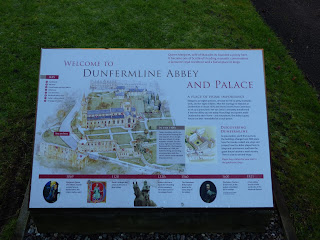on the way back from Muthill, I realised that there would be good light for photographs at Lake of Menteith.
I also knew the Historic Scotland car park would be closed but knew I could get over the fence.
Which is what I did, and here are the photographs.
I am a recently retired Scottish Primary Teacher. I am married, 5 sons, 1 daughter. This blog comprises my photos and my thoughts for each day
Thursday, 8 December 2016
Tuesday, 6 December 2016
Muthill Old Church
On the way back to the hotel, we passed through Muthill, where I noticed a sign for the old church,
So we stopped and I went for a wander with my camera. It was worth stopping to see.
Muthill is 3 miles south of Crieff.
The village contains a number of listed buildings including the church. The Tower, still standing and still roofed dates back to the 1100s.
The Tower was built by the Culdees, a group of monks.
The site occupied by the Old Parish Church may have been used for Christian worship for much longer, but the first documentary evidence of settlement here was when a group of Culdees established a religious community in the 1170s. They built the tower, possibly on the foundations of an earlier structure, and it seems likely that they also built a church. No evidence of an earlier tower, or of the supposed Culdee church (or any predecessor) has been uncovered, perhaps because of the later arrival on the site of much of the rest of what we now know as Muthill Old Church.
It would appear that much of the village was destroyed by Jacobite troops on their retreat to Culloden during the 1745 rebellion.
http://www.undiscoveredscotland.co.uk/muthill/oldchurch/index.html
https://en.wikipedia.org/wiki/Muthill
https://www.historicenvironment.scot/visit-a-place/places/muthill-old-church-and-tower/
So we stopped and I went for a wander with my camera. It was worth stopping to see.
Muthill is 3 miles south of Crieff.
The village contains a number of listed buildings including the church. The Tower, still standing and still roofed dates back to the 1100s.
The Tower was built by the Culdees, a group of monks.
The site occupied by the Old Parish Church may have been used for Christian worship for much longer, but the first documentary evidence of settlement here was when a group of Culdees established a religious community in the 1170s. They built the tower, possibly on the foundations of an earlier structure, and it seems likely that they also built a church. No evidence of an earlier tower, or of the supposed Culdee church (or any predecessor) has been uncovered, perhaps because of the later arrival on the site of much of the rest of what we now know as Muthill Old Church.
It would appear that much of the village was destroyed by Jacobite troops on their retreat to Culloden during the 1745 rebellion.
http://www.undiscoveredscotland.co.uk/muthill/oldchurch/index.html
https://en.wikipedia.org/wiki/Muthill
https://www.historicenvironment.scot/visit-a-place/places/muthill-old-church-and-tower/
Monday, 5 December 2016
Dunfermline Abbey
Dunfermline has been historically important in Scotland.
There is the Poem...
"The King sat in Dunfermline toun,
Drinking the blude red wine...."
It is associated with Queen Saint Margaret of Scotland who was buried here. There once was a Shrine to her and pilgrims came to pray there. In the Protestant Reformation the shrine, like most signs of Catholic Scotland were destroyed.
The Abbey Church is an interesting place to visit. The pillars are remarkable. Some of the painted ceiling remains, giving an indication of the grandeur and colour of pre- Reformation Scotland.
The site of the Shrine of St Margaret is marked outside behind where the main altar would have been.
The ruins of the monastery lie close to the Abbey Church and are worth visiting too.
And the squirrels are pretty tame.
https://en.wikipedia.org/wiki/Dunfermline
https://en.wikipedia.org/wiki/Saint_Margaret_of_Scotland
http://www.catholic.org/saints/saint.php?saint_id=304
http://www.historic-uk.com/HistoryUK/HistoryofScotland/St-Margaret/
There is the Poem...
"The King sat in Dunfermline toun,
Drinking the blude red wine...."
It is associated with Queen Saint Margaret of Scotland who was buried here. There once was a Shrine to her and pilgrims came to pray there. In the Protestant Reformation the shrine, like most signs of Catholic Scotland were destroyed.
The Abbey Church is an interesting place to visit. The pillars are remarkable. Some of the painted ceiling remains, giving an indication of the grandeur and colour of pre- Reformation Scotland.
The site of the Shrine of St Margaret is marked outside behind where the main altar would have been.
The ruins of the monastery lie close to the Abbey Church and are worth visiting too.
And the squirrels are pretty tame.
https://en.wikipedia.org/wiki/Dunfermline
https://en.wikipedia.org/wiki/Saint_Margaret_of_Scotland
http://www.catholic.org/saints/saint.php?saint_id=304
http://www.historic-uk.com/HistoryUK/HistoryofScotland/St-Margaret/
Subscribe to:
Comments (Atom)































































